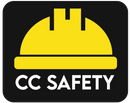November 21, 2022
General Safe Work Practices When Working Around Electrical Circuits
Safe Work Practices
Electrical accidents are largely preventable through safe work practices. Examples of these
practices include the following:
- de-energizing electric equipment before inspection or repair,
- keeping electric tools properly maintained,
- exercising caution when working near energized lines, and
- using appropriate protective equipment.
Electrical safety-related work practice requirements for general industry are detailed in Subpart
S of 29 CFR Part 1910, in Sections 1910.331–.335. For construction applications, electrical
safety-related work practice requirements are detailed in Subpart K of 29 CFR Part 1926.416 to
1926.417
Some general safety tips for working with or near electricity?
- Inspect portable cord-and-plug connected equipment, extension cords, power bars, and electrical fittings for damage or wear before each use. Repair or replace damaged equipment immediately.
- Always tape extension cords to walls or floors when necessary. Do not use nails and staples because they can damage extension cords and cause fire and shocks.
- Use extension cords or equipment that is rated for the level of amperage or wattage that you are using.
- Always use the correct size fuse. Replacing a fuse with one of a larger size can cause excessive currents in the wiring and possibly start a fire.
- Be aware that unusually warm or hot outlets or cords may be a sign that unsafe wiring conditions exists. Unplug any cords or extension cords from these outlets and do not use until a qualified electrician has checked the wiring.
- Always use ladders made with non-conductive side rails (e.g., fibreglass) when working with or near electricity or power lines.
- Place halogen lights away from combustible materials such as cloths or curtains. Halogen lamps can become very hot and may be a fire hazard.
- Risk of electric shock is greater in areas that are wet or damp. Install Ground Fault Circuit Interrupters (GFCIs) as they will interrupt the electrical circuit before a current sufficient to cause death or serious injury occurs.
- Use a portable in-line Ground Fault Circuit Interrupter (GFCI) if you are not certain that the receptacle you are plugging your extension cord into is GFCI protected.
- Make sure that exposed receptacle boxes are made of non-conductive materials.
- Know where the panel and circuit breakers are located in case of an emergency.
- Label all circuit breakers and fuse boxes clearly. Each switch should be positively identified as to which outlet or appliance it is for.
- Do not use outlets or cords that have exposed wiring.
- Do not use portable cord-and-plug connected power tools if the guards are removed.
- Do not block access to panels and circuit breakers or fuse boxes.
- Do not touch a person or electrical apparatus in the event of an electrical incident. Always disconnect the power source first.
